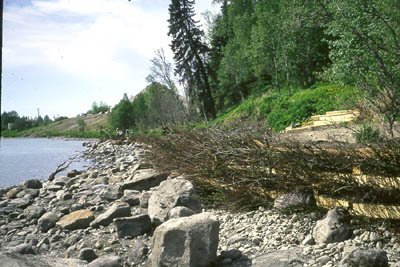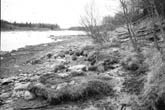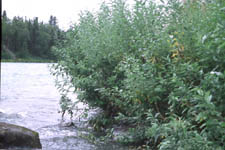Robbin B. Sotir & Associates, Inc.
Case Study: Kenai River/span>
Location: Soldotna, Alaska
Client: City of Soldotna
Objectives: Stop the riverbank erosion, restore the riparian and aquatic habitat function, and improve recreational opportunities.

Nature of Firm's Resonsibility
 The Kenai River is located on the Kenai Peninsula approximately seventy-five (75) miles south of Anchorage, Alaska.
The river drains more than two thousand (2,000) sq. mi. of diverse landscape including ice fields, glaciers, lakes,
mountains, and lowlands. The Kenai River is the state's premier salmon and trout stream and has a world class reputation
for its trophy Chinook sport fishing.
The Kenai River is located on the Kenai Peninsula approximately seventy-five (75) miles south of Anchorage, Alaska.
The river drains more than two thousand (2,000) sq. mi. of diverse landscape including ice fields, glaciers, lakes,
mountains, and lowlands. The Kenai River is the state's premier salmon and trout stream and has a world class reputation
for its trophy Chinook sport fishing.
Soldotna Creek Park attracts large numbers of fisherman and much of the bank vegetation had been destroyed. This, along
with yearly heavy foot traffic of 100,000 plus people in a six week period, boat wakes, and ice scour, caused accelerated
bank erosion and loss of riparian habitat, and prompted the city to seek sloutions.
After visiting the site, conferring with Alaska Department of Fish and Game personnel, attending public meetings and analyzing available information, Robbin B. Sotir & Associates, Inc. designed soil bioengineering systems to meet the project goals of habitat restoration, bank stabilization and improved recreational trails and overlooks. Nelson, Inc. served as the civil engineers on the project. Conceptual and final plans, specifications, and cost estimates were produced. The systems included low live cribwalls, live siltation construction, live fascines, and native grass sods. The woody plant materials used, with the exception of one native rose, were all willow as follows: Salix bebbiana, Salix lasiandra, Salix scouleriana, Salix, barclayii and Salix alaxensis. The cuttings were harvested and refrigerated prior to installation. Soldotna Creek Park was constructed during the spring of 1994.
 Major flooding occurred during the fall of 1995 when discharge peaked at forty two thousand (42,000) cfs, a
flow estimated to be a one hundred (100) year return interval event, with a long high flow duration. Although the
soil bioengineering installations were effected, damage was minimal. The willow used in the live cribwalls and live
siltation construction is providing excellent overhanging cover for fish, despite heavy browsing of new top growth by
moose and deer. The banks continue to be stable and the riparian zone is improving in function.
Major flooding occurred during the fall of 1995 when discharge peaked at forty two thousand (42,000) cfs, a
flow estimated to be a one hundred (100) year return interval event, with a long high flow duration. Although the
soil bioengineering installations were effected, damage was minimal. The willow used in the live cribwalls and live
siltation construction is providing excellent overhanging cover for fish, despite heavy browsing of new top growth by
moose and deer. The banks continue to be stable and the riparian zone is improving in function.
This project appears in several papers and articles.
3602 Ernest W. Barrett Parkway
Marietta, Georgia 30064-2732
Phone: 770-424-0719
sotir@sotir.com
©2001 Robbin B. Sotir & Asociates, Inc.